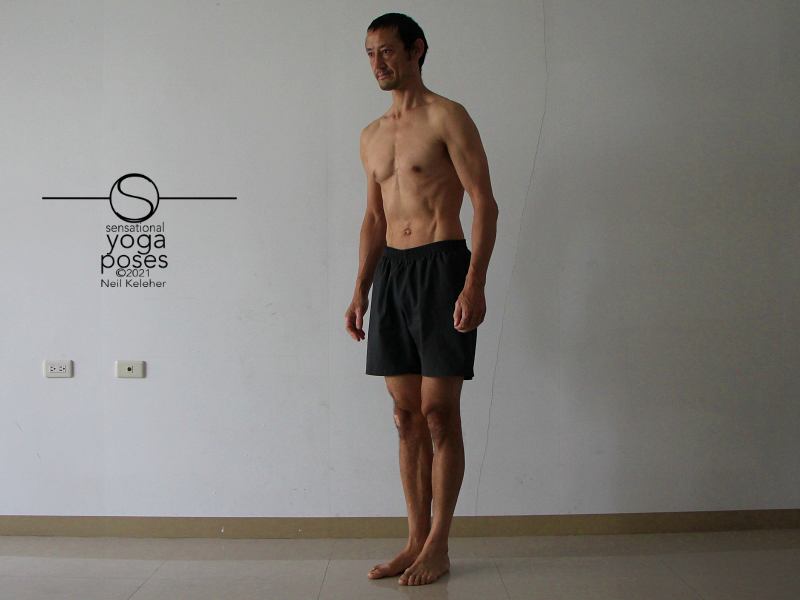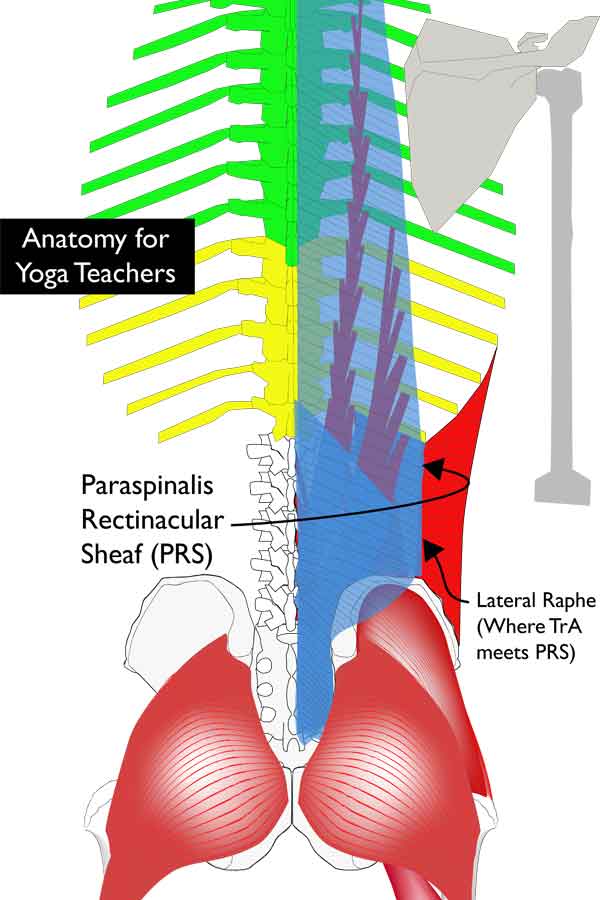Side bending the spine
Activating the short side and stretching the thoracolumbar fascia
There are a few ways to side bend the spine but one of my current favored methods is to focus on active side bends. That means activating the muscles on the short side of the side bend. I do like to also focus on the opening side but the advantage of focusing on the short side is the sensation is easier to feel.
One of the challenges is in positions where it is easy to let gravity drive the side bend. And so one way that I teach side bending is to use poses where the short side of the side bend is lower than the open side.
With a focus on activating the short side, it's then easy to recognize when it is active.
Side bending the spine, TOC
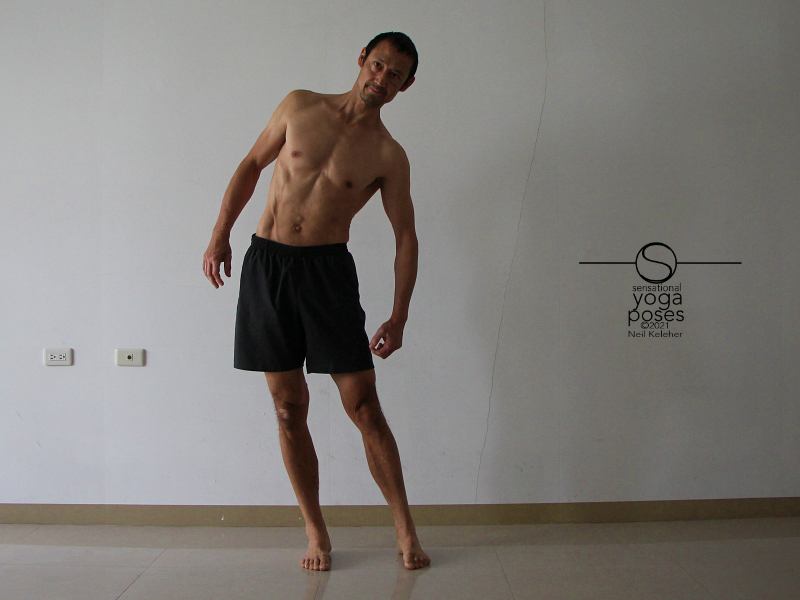
Standing side bend
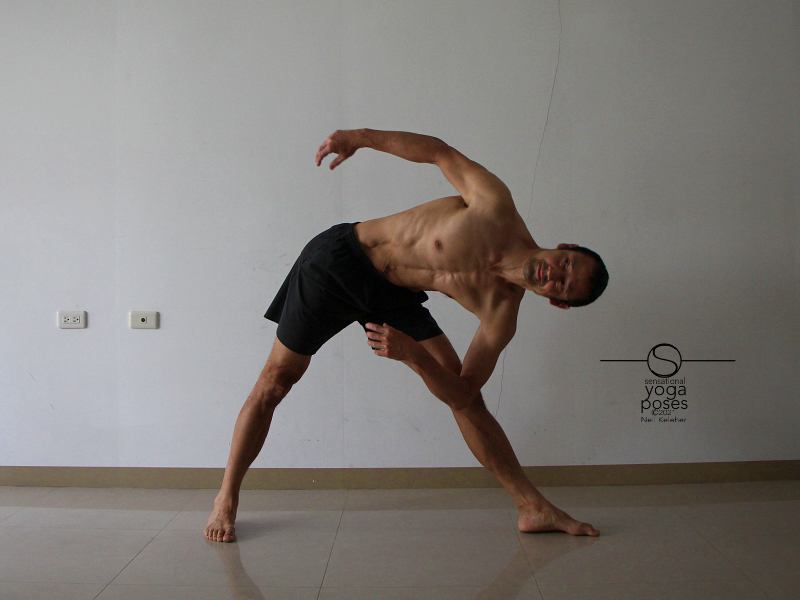
Triangle pose side bend
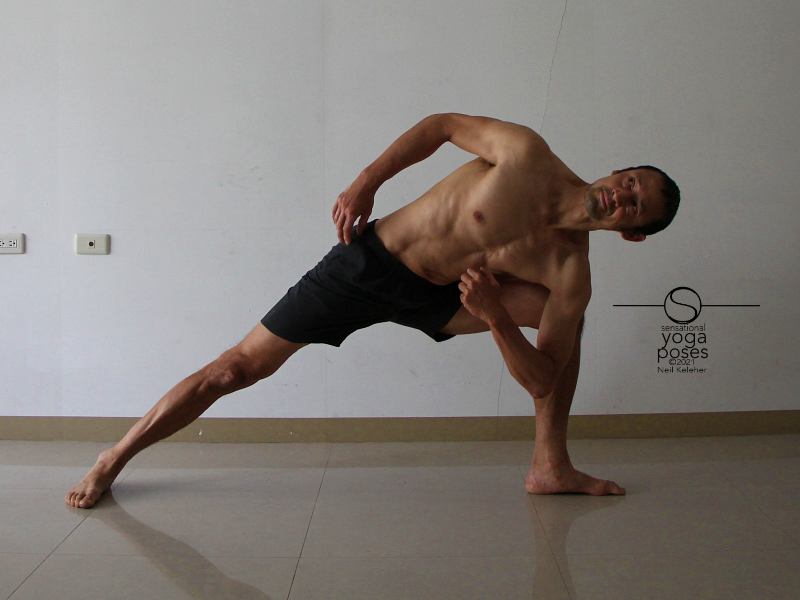
Side angle pose side bend
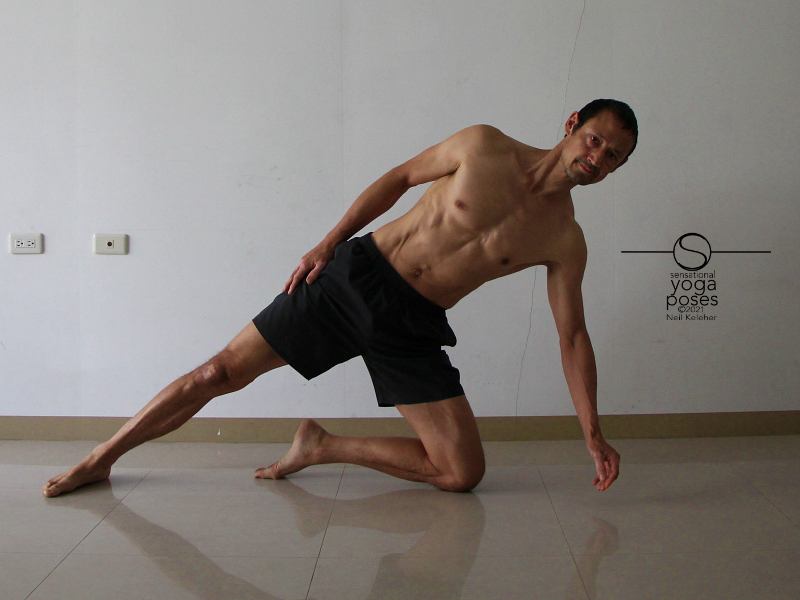
Lateral knee balance
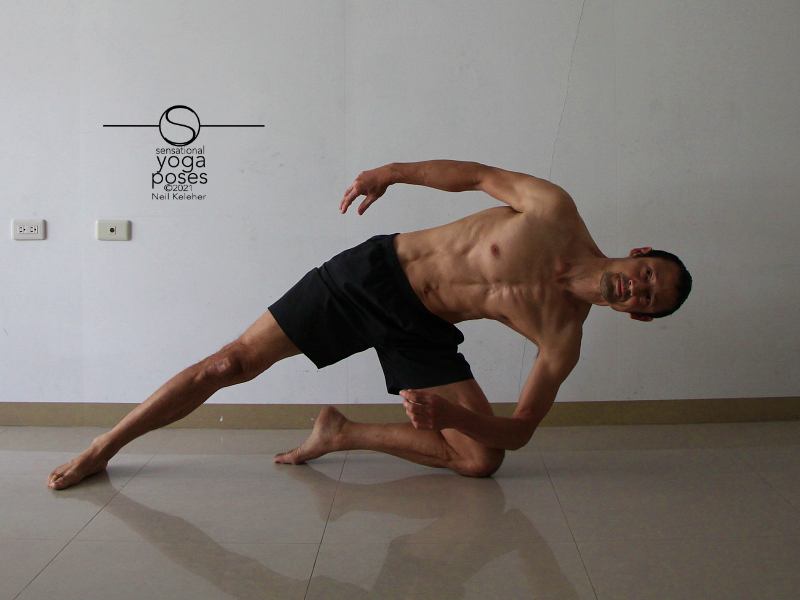
Lateral knee balance side bend
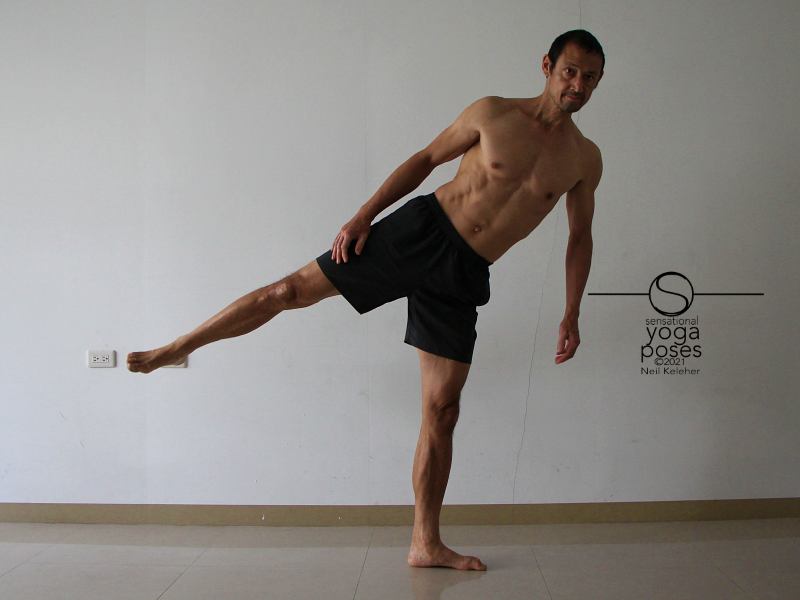
Side balance
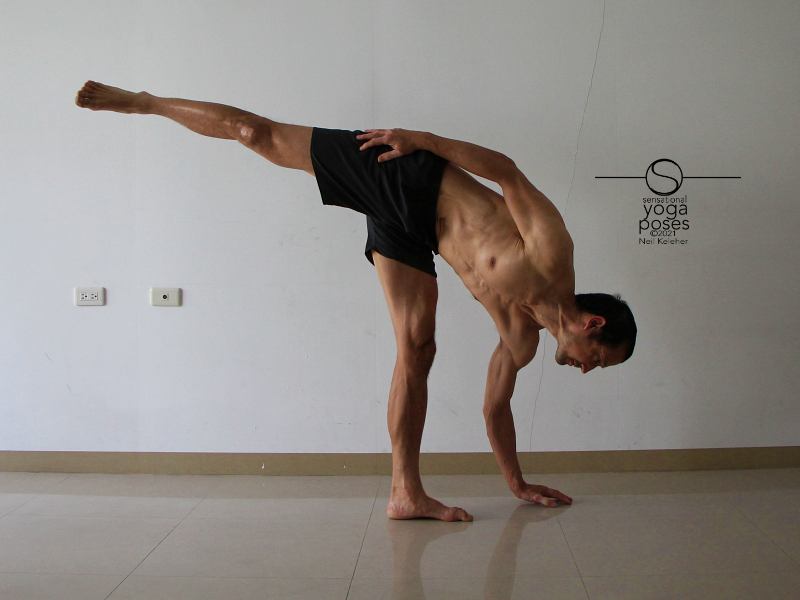
Half moon
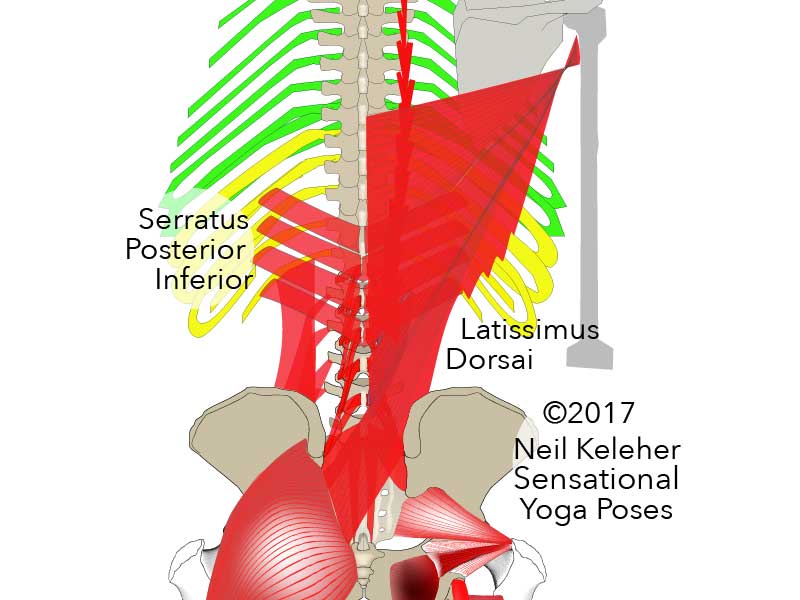
Serratus posterior inferior
One way to possibly stretch the thoracolumbar fascia, particularly while doing "active" side bends is to engage the transverse abdominis.
The transverse abdominis aponeurosis forms the front and back layers of the paraspinalis rectinacular sheath (PRS), the structure that wraps the spinal erectors muscles and that forms a major part of the thoracolumbar fascia. When the transverse abdominis engages, it potentially adds tension to the thoracolumbar fascia.
If this tension is added before or during a side bend for the spine it may be possible to stretch the thoracolumbar fascia, at least the outer edges of it.
In standing side bend you can push your hips to one side and then bend the waist, the thorax and even the cervical spine to the opposite side.
When you actively contract the short side in the side bend (so if bending the spine to the right, actively contracting the right side of the waist and ribcage), you stretch the opposite side of the thoracolumbar fascia.
As mentioned, it's easy to relax the short side and allow gravity to do the work. Instead, the idea is to actively contract the muscles on the short side. You should be able to feel the contraction.
As an additional option, you could also focus on lengthening the long side. This can be in combination with contracting the short side. Or it can be in relative isolation, simply focus on lengthening the long side. That can include lifting the ribs on that side, as well as spreading them apart on top of bending the ribcage to the side.
Note that in the standing side bend, activating the transverse abdominis and using it to pull the belly in can not only help to stretch the thoracolumbar fascia. It can also stabilize the SI joints.
In triangle pose one option for side bending the spine is to bend downwards. (You could also bend upwards). If you start with your hand on your shin or on the floor, you can first lift the bottom hand. Then engage the muscles on the bottom most side of the body to bend the bottom most side of the upper body downwards, towards the front of the front leg.
Here again, you can lead with pulling the belly in. You could hold the side bending action, or rest, by coming up and placing your hand on the shin or floor, and then repeat.
Side angle could also be used in a similiar way.
Starting with the forearm resting on the thigh, you can lift the arm, then contract the lowermost side of the torso to side bend the spine.
You can use the side bend to help touch either the hand to the floor or the elbow. This can then be a good preparation exercises for binding in side angle.
Here again the idea can be to first pull the belly in to help brace the thoracolumbar fascia while stretching it and also to help stabilize the SI joints and thus the hip bones.
Another pose that you can do this in could be called knee balance or more specifically "lateral knee balance" to differentiate it from other knee balancing options.
Going into a side plank like position with the bottom knee bent and on the floor and with the top foot also on the floor but with the top knee straight, you can first lift the hand. If you can't lift the hand without your top foot lifting, then shift your body relative to your supporting knee away from the hand.
You can practice this a few times, perhaps actively pressing the knee down to activate the hip prior to lifting the hand.
From there, with hand lifted, you can again contract the bottom most side of the torso to side bend the spine downwards.
You can then try touching an elbow to the floor. You could also try touching your shoulder or even your cheek to the floor.
If you find your hip muscles locking or activating strongly, it may help to focus on the transverse abdominis activation and maintaining it while you go down. Here again the rational is that by engaging the transverse abdominis, particularly the lower portion, you stabilize the SI joints.
Incidentally, the portion of the thoracolumbar fascia that thickens behind the sacrum and the SI joints is called the thoracolumbar composite. When you engage the lower transverse abdominis you pull the fronts of the hip bones inwards and this is actually resisted by the thoracolumbar composite. This helps to stabilize the SI joints.
As mentioned, it also stabilizes the hip bones and that means that the hip muscles can activate effectively to stabilize and control the hip joints.
Another option to alleviate excessive hip tension in the bottom leg of this pose is to rotate the bottom thigh slightly outwards or inwards. (For more on this, read hip rotation.)
A variation of side moon which I sometimes call side balance can also be used to side bend the spine. In this instance, while balancing on one foot with the foot turned out, you can side bend the spine upwards, away from the floor.
The challenge here can be with staying balanced. But here again transverse abdominis activation may help.
Not only does it help to anchor the hip muscles, but also the long thigh muscles, the muscles that attach from the corner points of the hip bones to the outside and inside edges of the lower leg bones.
Another pose for practicing sidebending the spine is half moon with the hand on the floor.
Here too you can lift the hand or allow the elbow to bend as you activate the down most side of the torso so that the side of the torso approaches the front of the standing leg thigh. Here again you can activate transverse abdominis.
Note that the upper portion of the transverse abdominis spans the front arch of the ribcage and when it activates it may act in opposition to the serratus posterior inferior.
This muscle, the serratus posterior inferior, is also part of the thoracolumbar fascia. Bending to the left you may be able to stretch the right side serratus posterior inferior. With the belly pulled in and the transverse abdominis and serratus posterior inferior working against each other, you may be able to stretch the muscle while it is active.
Published: 2021 02 14
Updated: 2021 02 27








